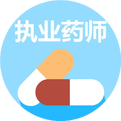Seven essential materia medica texts are crucial for practitioners preparing for their exams. The editor of Global Online School has compiled relevant content, hoping to assist candidates.
The examination syllabus requires an understanding of the academic value, authors, and publication dates of these seven texts. These texts, in chronological order of their publication, are: Shen Nong Ben Cao Jing (Shen Nong’s Classic of Materia Medica), Ben Cao Jing Ji Zhu (Collected Commentaries on the Materia Medica), Xin Xiu Ben Cao (Newly Revised Materia Medica), Zheng Lei Ben Cao (Classified Materia Medica), Ben Cao Gang Mu (Compendium of Materia Medica), Ben Cao Gang Mu Shi Yi (Supplement to the Compendium of Materia Medica), and Zhong Hua Ben Cao (Chinese Materia Medica).

Shen Nong Ben Cao Jing

Commonly referred to as Ben Jing (Classic of Materia Medica), this text is a representative work of the Han Dynasty. Although attributed to the legendary figure Shen Nong, it was not authored by a single person at one time but was developed over a long period through supplementation and refinement. It is the earliest existing monograph on pharmacology and laid the foundation for the development of materia medica. The book systematically summarizes the pharmacological achievements prior to the Han Dynasty, briefly outlines the four qi (temperatures) and five flavors of herbs, their toxicity, compatibility principles, methods of administration, and dosage forms, thereby establishing the theoretical foundation of traditional Chinese medicine.

Ben Cao Jing Ji Zhu

This text is a representative work of the Wei, Jin, and Northern and Southern Dynasties. Authored by Tao Hongjing, it was completed around 500 AD (during the Liang Dynasty). In the preface, it not only annotates and elaborates on the articles of the Ben Jing but also supplements a wealth of information on collection, identification, processing, formulation, dosage, commonly used medicines for various diseases, and dietary restrictions, greatly enriching pharmacological theory.
It pioneered the classification of medicines based on their natural properties, categorizing the 730 recorded medicines into seven types: jade and stone, plants, insects and animals, fruits, vegetables, grains, and unnamed substances. This book systematically organized and supplemented the Shen Nong Ben Cao Jing for the first time, establishing a model for comprehensive materia medica works.

Xin Xiu Ben Cao, also known as Tang Ben Cao

This text is a representative work of the Sui and Tang Dynasties. Compiled based on a nationwide survey of medicinal materials, it was collaboratively authored by 21 individuals, including Changsun Wuji, Li Ji, and Su Jing, comprising 54 volumes and documenting 850 types of medicines. In addition to the main text, it includes illustrations of medicinal substances with accompanying descriptions, pioneering the method of compiling pharmacological texts with visual aids. The completion of this book relied on the administrative power of the state and ample human and material resources, making it the first officially compiled pharmacopoeia in Chinese history, praised as the world’s first pharmacopoeia. It made significant breakthroughs in both content and format, comprehensively summarizing the pharmacological achievements prior to the Tang Dynasty and quickly spreading both domestically and internationally, greatly influencing the development of medicine in later generations.

Jing Shi Zheng Lei Bei Ji Ben Cao, abbreviated as Zheng Lei Ben Cao

This text is a representative work of the Song, Jin, and Yuan Dynasties. Authored by Tang Shenwei, it is based on the Jia You Ben Cao by Yu Xi and the Tu Jing Ben Cao by Su Song, and it collects and transcribes a wealth of insights from famous physicians before the Song Dynasty regarding materia medica, discussions from historical texts, and Buddhist and Daoist scriptures, as well as folk experiences and prescriptions for disease prevention and treatment. The book consists of 30 volumes, documenting 1,746 types of medicines and over 3,000 prescriptions. It features illustrations and text, combining medicine and pharmacy, with detailed information, representing a culmination of materia medica prior to the Song Dynasty, preserving a large number of ancient texts with high academic and literary value.

Ben Cao Gang Mu

Commonly referred to as Gang Mu, this text is a representative work of the Ming Dynasty. The author is Li Shizhen. The book consists of 52 volumes, approximately 2 million words, documenting 1,892 types of medicines, with over 1,100 illustrations and more than 11,000 prescriptions. The preface provides a comprehensive, systematic, and in-depth summary and elaboration on the history of materia medica and theories of medicinal properties; each section is categorized into 16 parts and 60 categories based on natural properties, with each medicine introduced in terms of its proper name, explanation, compilation, corrections, processing, qi and flavor, indications, inventions, and accompanying prescriptions, becoming the most complete classification system of its time. This book not only consolidates the pharmacological achievements of China prior to the 16th century but also elevates the development of materia medica to an unprecedented height, making outstanding contributions to many fields of world medicine and natural sciences, including biology, chemistry, astronomy, geography, and mining.

Ben Cao Gang Mu Shi Yi

Commonly referred to as Gang Mu Shi Yi, this text is a representative work of the Qing Dynasty. The author is Zhao Xue Min. The book consists of 10 volumes, documenting 921 types of medicines, including 716 newly added types, making it the first to increase the number of new medicines in ancient materia medica, greatly enriching the field. It also supplements the Ben Cao Gang Mu where details were lacking and corrects errors. It not only summarizes the new achievements in materia medica from the 16th to 18th centuries but also preserves parts of many now-lost prescriptions and texts, holding high practical and literary value.

Zhong Hua Ben Cao

This text is a contemporary representative work of materia medica. It is overseen by the National Administration of Traditional Chinese Medicine and edited by Nanjing University of Chinese Medicine. The book consists of 34 volumes, with the first 30 volumes covering traditional Chinese medicines, documenting 8,980 substances; the last four volumes cover ethnic medicines. This book comprehensively summarizes the achievements of traditional pharmacology over 2,000 years in China, reflecting the development levels of traditional Chinese medicine, Tibetan medicine, Mongolian medicine, Uyghur medicine, Dai medicine, and Miao medicine in the 20th century, and includes the most substances documented.


